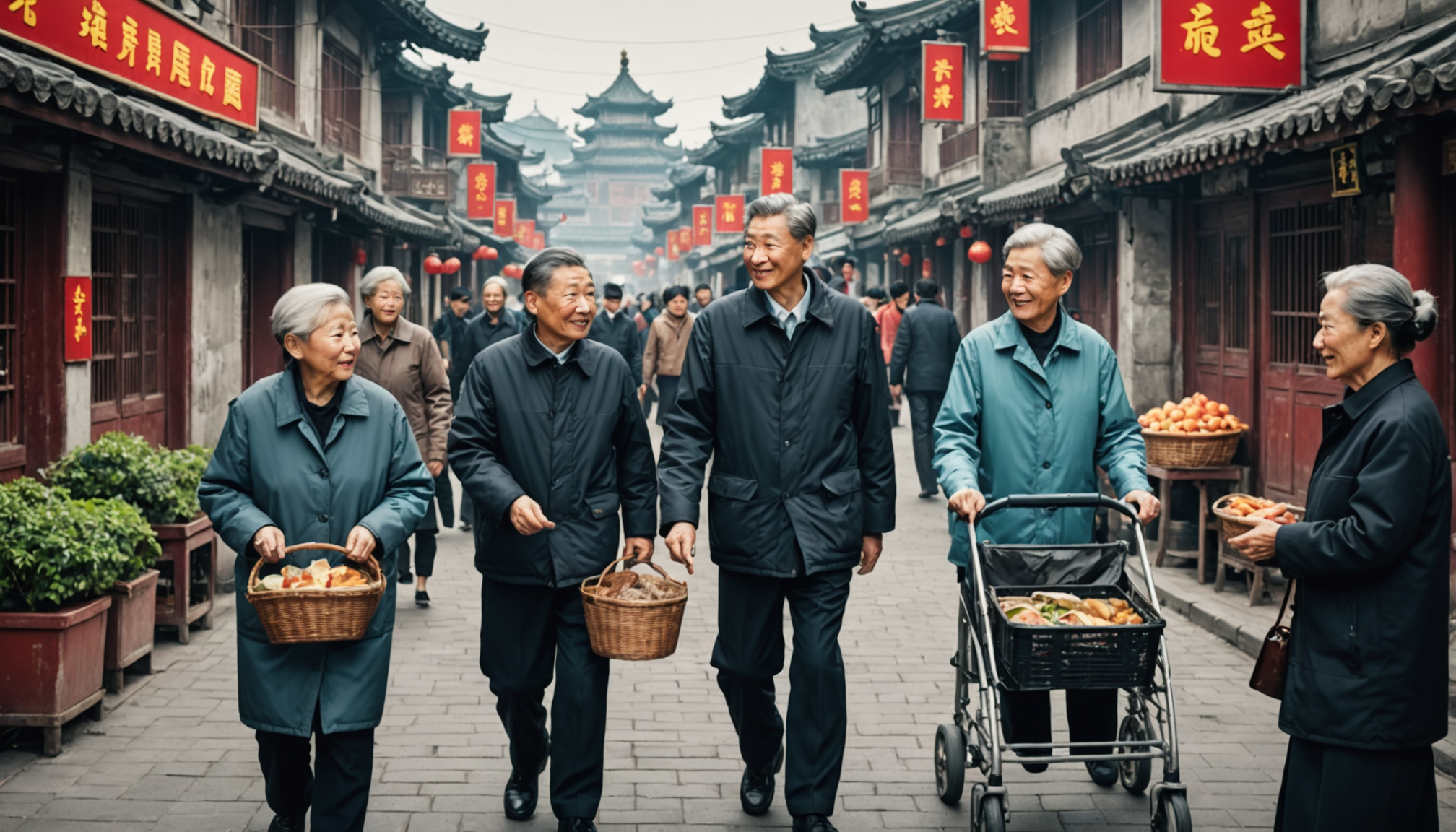China, with its aging population, is going through a pivotal period marked by the emergence of the so-called silver economy. This is a booming sector that meets the growing needs of a senior population seeking tailored services. While the challenges of making profits in this area are notable, the opportunities it creates are immense. Complex challenges are emerging, ranging from infrastructure to technological innovations, while attracting the interest of local and international companies. This panorama offers a unique perspective on the economic and social dynamics shaping the future of China. China’ssilver economy is booming, driven by its aging population. Currently, this sector represents about6%of the national GDP and is expected to reach10%
by2035. The main challenge lies in the difficulty of achieving consequential profits despite a promising market. Companies, both local and international, are turning to digital strategies to capture this new consumer base, while juggling increasing societal and economic demands. The economic recovery from the global financial crisis, combined with increasing life expectancy and declining birth rates, further accentuate the challenges of this dynamic. Discover China’s silver economy in this in-depth overview. Explore the trends, opportunities, and challenges of China’s aging population and its impact on the market. A must-read for understanding China’s current and future economic dynamics. China’s aging population has led to the emergence of a silver economy , an innovative sector with great potential. Indeed, the country is facing major challenges, notably a reduction in births combined with an increase in life expectancy. This demographic dynamic stimulates economic players to develop products and services specially designed for seniors. Local and international companies are increasingly interested in this market, aware that it represents an unprecedented opportunity. The challenges of China’s silver economyDespite its undeniable potential, the silver economy in China faces challenges obstacles significant. The cultural perception of older people, often associated with limits, slows down innovation. Furthermore, the investments required to support this prosperous sector remain high. Companies must succeed in combining quality and accessibility to attract an aging clientele who is looking for solutions adapted to their needs and lifestyle.

In the years to come, the silver economy could see a growth significant. Local governments are already putting policies in place to stimulate innovation in this area. At the same time, brands are exploring adapted technologies, such as telemedicineand universal designs, to appeal to seniors. Companies’ commitment to addressing these challenges will transform the silver economy into an essential pillar of China’s economic future. To find out more, discover this article on
Table des matières
Togglechallenges and opportunities
linked to this sector. The rise of silver economy
in China is undeniable, as the country faces a rapid aging of its population. This situation leads to a fundamental transformation of the needs and expectations of alumni. In fact, the
senior economy is not limited to a passing fashion, but poses itself as a real strategic opportunity for businesses and governments wanting to respond to these changing demographics. The figures clearly illustrate this phenomenon: currently, the silver economy represents approximately
6% of GDPof China and should reach the 10% by 2035. This data reveals how crucial the sector is to future economic development. At the same time, the challenges facing this market, particularly in terms of profitability, must be addressed diligently. The question of the support for alumni in terms of care, services and adapted products is therefore essential to ensure the success of this transition. The landscape of
silver economyis also changing thanks to the integration of digital technologies. Innovative solutions are gaining momentum and offering responses adapted to the specific needs of seniors. Companies invest in various sectors ranging from health care to leisure services , passing throughconsumer products dedicated. This focus on the senior market could also stimulate innovation and contribute to the sustainable economy
.Thus, the silver economy in China represents both a challenge and a promise for the future. With growing awareness of the importance of this dynamic, it is essential to anticipate the changes to come and act accordingly to support a generation that plays a crucial role in the economic and social fabric of the country.








